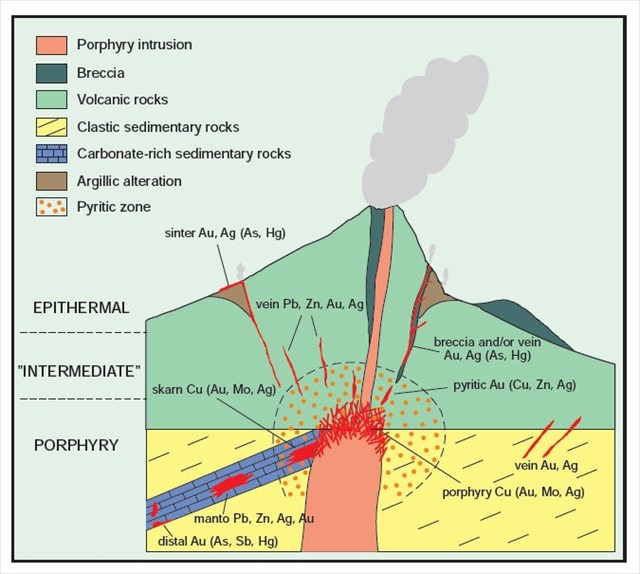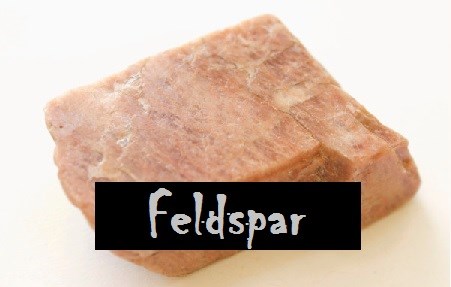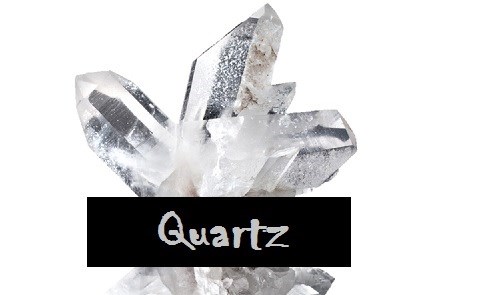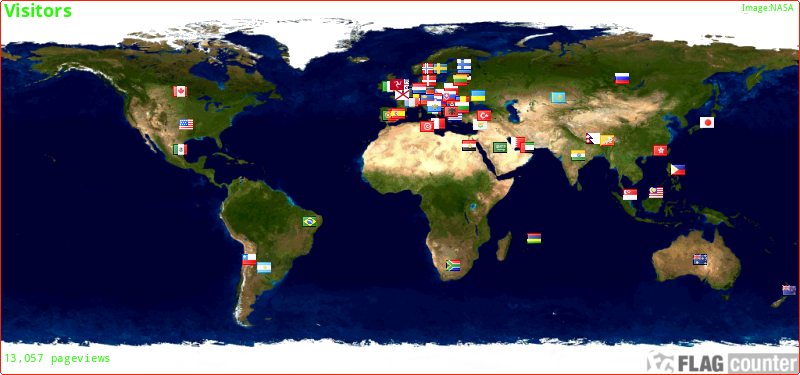
Struttura del porfido
Con il termine ”porfido” si definisce una tipologia di rocce ignee accomunate dalla stessa struttura, formata da una pasta omogenea di minerali di piccole dimensioni in cui sono immersi cristalli di dimensioni più grosse (solitamente quarzo o feldspato), chiamati ”fenocristalli”. Le strutture porfiriche sono caratteristiche delle lave e delle rocce magmatiche che formano filoni e dicchi. I fenocristalli sono formati dal raffreddamento lento del magma nelle profondità terrestri, mentre la pasta di cristalli più piccoli si origina da un raffreddamento più rapido, avvenuto dopo che il magma sale attraverso una crepa nella crosta terrestre e/o raggiunge la superficie della Terra.
I sedimenti di porfido sono formati quando il magma, salendo attraverso la crosta terrestre, si raffredda in due fasi diverse: nella prima il magma si raffredda lentamente all’interno della crosta terrestre, formando cristalli con un diametro di circa 2mm, o superiore; nella seconda fase il magma si raffredda più rapidamente a profondità relativamente minori o nel momento in cui erutta da un vulcano, creando granuli di piccole dimensioni, solitamente invisibili a occhio nudo.
Porphyry Formation
The term 'porphyry' describes a specific texture found in igneous rocks, where they contain larger crystals of certain minerals (especially feldspar or quartz), these being surrounded by a composite of minerals that have a much smaller sized crystal. The larger crystals are called 'phenocrysts' or 'sprinkle grains'. Porphyritic structures are characteristic of lavas and the igneous rocks found in dykes and sills. The phenocrysts are separated by the slower cooling of magma at depth, while the smaller-sized matrix is caused by a more rapid cooling after the magma is squeezed into a crack in the Earth's crust and/or it has reached the Earth's surface.
Porphyry deposits are formed when a column of rising magma is cooled in two stages. In the first, the magma is cooled slowly deep in the crust, creating the large crystal grains with a diameter of 2 mm or more. In the second and final stage, the magma is cooled rapidly at relatively shallow depth or as it erupts from a volcano, creating small grains that are usually invisible to the unaided eye.


I minerali sono elementi naturali singoli o formati da composti chimici che hanno proprietà fisiche come la forma dei cristalli, il colore, la brillantezza, la durezza, la densità, la tendenza alla rottura e allo sfaldamento.
In questa roccia potrete trovare soprattutto cristalli di feldspato e di quarzo.
Minerals, naturally occurring elements and chemical compounds having characteristic physical properties such, crystal shape, color, line color, gloss, hardness, cleavage, fracture, density and optical conditions.
You will in this stone find especially the minerals feldspar or quartz.

I feldspati sono una categoria di minerali che comprende circa il 60% di quelli presenti nelle rocce sulla crosta terrestre; inoltre, sono la base per la classificazione delle rocce ignee. Sono caratterizzati da cristalli posizionati in cue sensi diversi, approssimativamente perpendicolari l’uno all’altro; da un 6 sulla scala di durezza e da colori che variano dal bianco-grigio, al rossastro, verdastro, blu scuro, fino ad arrivare al nero.
Feldspar, a very important group of minerals that comprise approximately 60% of the rocks in the crust, and which forms the basis for the classification of igneous rocks. They are characterized by two good gap directions which are approximately perpendicular to each other. Hardness 6, the color varies from white and gray to reddish, greenish, bluish towards black.

Il quarzo è un minerale composto prevalentemente da silicio (SiO2). Ha una durezza molto elevata, infatti è in grado di graffiare il vetro e non presenta tendenza allo sfaldamento.
Dopo i feldspati, il quarzo è il mineralie più presente nella crosta terrestre e si trova sia in rocce ignee (granito, pegmatite), sia in rocce metamorfiche (quarzite, gneiss), sia in rocce sedimentarie (arenaria, conglomerati di quarzite), sia in sedimenti veri e propri (sabbia). A volte, inoltre, ha un’origine idrotermale, trovandosi in crepe, rocce e depositi nati da sorgenti di acqua calda.
Quartz, a mineral consisting of silica, SiO2. It is so hard that it scratches glass and there is no cleavability.
Quartz is second only to feldspar the most prevalent mineral in Earth's crust and occurs both in igneous rocks (granite, granite pegmatite), in metamorphic rocks (gneiss, quartzite), in sedimentary rocks (sandstone, quartzite conglomerate) and in sediments (sand). The mineral besides occurs hydrothermal at times, in voids and cracks in many rocks and in deposited from hot springs.
Per validare il vostro log
Per validare il log dovrete recarvi alle coordinate del listing e rispondere alle seguenti domande.
Una volta che avrete le risposte, inviatele all’owner per la verifica.
Potete loggare immediatamente dopo averle inviate, se ci sono errori o dubbi, l’owner vi contatterà.
Tutti iog mandati senza aver mandato le risposte (o quelli con dei dubbi non risolti da parte dell’owner) saranno cancellati senza preavviso.
Si prega di non include nei oog foto che potrebbero suggeruire le risposte giuste.
To log this cache.
To get to log this cache you will have to visit and answer the questions which are related to the coordinates given the earthcache.
When answers are collected, send them to CO for verification.
You can log immediately answers are sent CO. If there are any questions about your answers CO will contact you.
Logs without answers to CO or with pending questions from CO will be deleted without any further notice.
Please do not include pictures in your log that may answer the questions.
..
..
Domande
..
1.Rispondete alle seguenti domande recandovi alle coordinate del lsiting.
..
A. Quale particolarità potete osservare nella roccia a ground zero?
..
B.Descrivete cosa vedete nella roccia e quale minerale forma ciò che è la risposta alla domanda A.
..
C.Questa roccia si è formata da un raffreddamento in una o più fasi? Argomentate la vostra risposta.
..
D.Osservate bene la roccia a ground zero: confrontandola con la foto nella parte superiore del testo, direste che è più simile alla roccia A, B, C, o D?
..
2. Scattate una voastra foto con il GPS mentre vi trovate a ground zero, senza fornire le risposte giuste! (non è obbligatorio psotare la foto nel log)
Questions
1. Answer the questions under by visiting the Coordinates.
A. What is it that is special for what you see in this stone at gz?
B. Describe what you see that is in front of you in the stone, and what mineral is it that makes up what you have answered in question A?
C. Is this stone cooled in one stage or more than one? Tell me how you know this answer?
D. Take a deeper look at the stone at the corner here at gz, out from the header photo at the top of the cache text, would you say that the most similar stone is the A, B, C or D stone?
2. Take a photo of yourself, the group or your GPS when logging the cache.
Without revealing any answers!
(It’s voluntary to post a photo in your online log)
..
A big credit goes out to ilTozzo for the amazing help on the translation job for this cache!
I am very grateful for logging some of your earthcaches back in Milano, March 2016, making me get in contact with you, and it all led to this amazing help. Thanks for being so friendly and helpful without knowing me at all.
